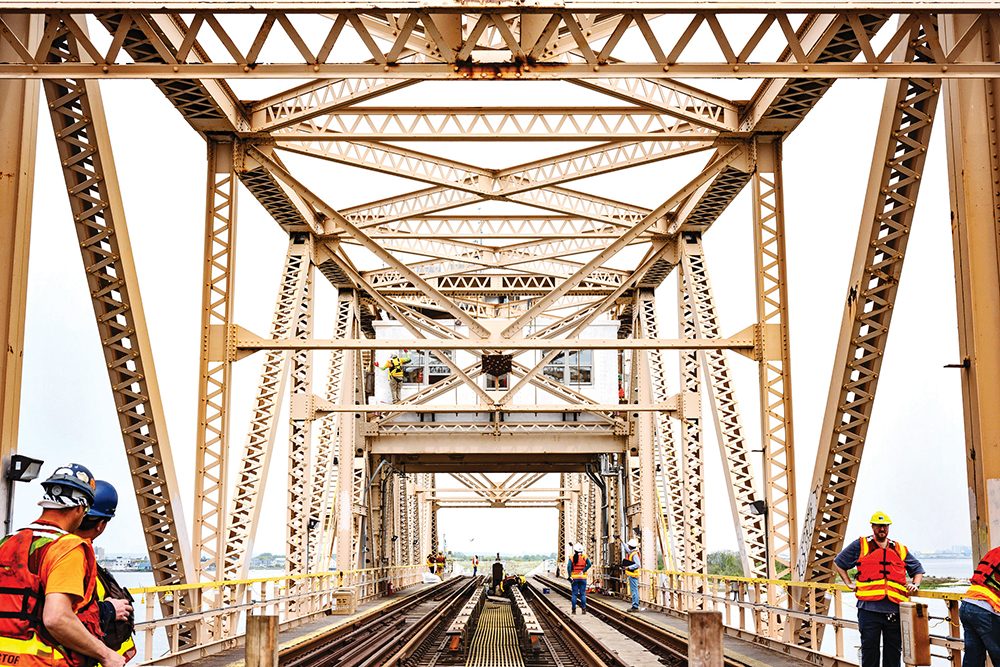By Michael V. Cusenza
The proverbial light at the end of a long, arduous—and still not fully complete—tunnel was affixed to the A train on Monday as weary riders welcomed back the Rockaway-bound iron horse.
Service to the peninsula resumed on Monday following critical resiliency and rehabilitation work. The Rockaway Line, which carries the A and S trains, is the connection between the Rockaways and the rest of Gotham, serving nearly 12,500 riders daily and connecting a population of almost 125,000 residents. The project, which continues, is on time and under budget, according to Metropolitan Transportation Authority officials.
MTA Construction & Development carried out a complete reconstruction of Hammels Wye, an elevated structure that all trains must cross to reach the peninsula. The South Channel Bridge, which must swing open to allow for marine traffic to cross Jamaica Bay, also underwent an overhaul to update its aging electrical and mechanical components which previously were often the source of significant delays in train service. Both structures are more than 65 years old, and their completed overhaul ensures Rockaway residents can continue to depend on reliable service on the A line for decades to come, authority officials crowed on Monday.
Following extensive damage caused by Superstorm Sandy, emergency work to repair the Rockaway Line was completed in subsequent months. However, many components of the critical line are over 65 years old and required extensive overhauls to weather the effects of increasingly intense storms, flooding, and climate change. The viaduct and bridge connecting the Rockaway Peninsula with the rest of Queens needed comprehensive rehabilitation and repair work to ensure these structures withstand future extreme weather events, which required a 17-week 24/7 shutdown this winter. Through two 10 hour shifts, 200 construction workers worked 20 hours a day on both weekdays and weekends to complete this portion of the project on time.
Additional work on the Rockaway Line Resiliency and Rehabilitation Project, including structural repairs, new interlocking infrastructure, and a new signal tower will take place during future weekend outages. The entire project is expected to be complete by late 2026.
Other components of the Rockaway Line Resiliency and Rehabilitation project included building 12 foot high, 900-foot-long wave barriers along the tracks to protect against coastal storm surges and can withstand future Superstorm Sandy-like strength storms. The height of the wave barriers was determined by future storm surge maps with additional feet added to ensure maximal protection. Debris washed onto the tracks was a major source of damage during Superstorm Sandy. Now the tracks are protected by newly built debris shields that will prevent debris from washing onto the tracks. Additional resiliency efforts also included repairs to the Rockaway Viaduct and fortifications to embankments washed out by Superstorm Sandy. Large boulders and rocks, known as riprap were installed at the base of the tracks to prevent erosion from both daily tides and storm surge. Riprap also serves to prevent water incursion into infrastructure.
“Our residents rely on this route not only to commute, but to access opportunity, education, healthcare, and connection. Public transportation must be equitable, reliable, and accessible to all and today’s reopening moves us one step closer to that goal,” said State Sen. James Sanders, Jr. (D-South Ozone Park).


